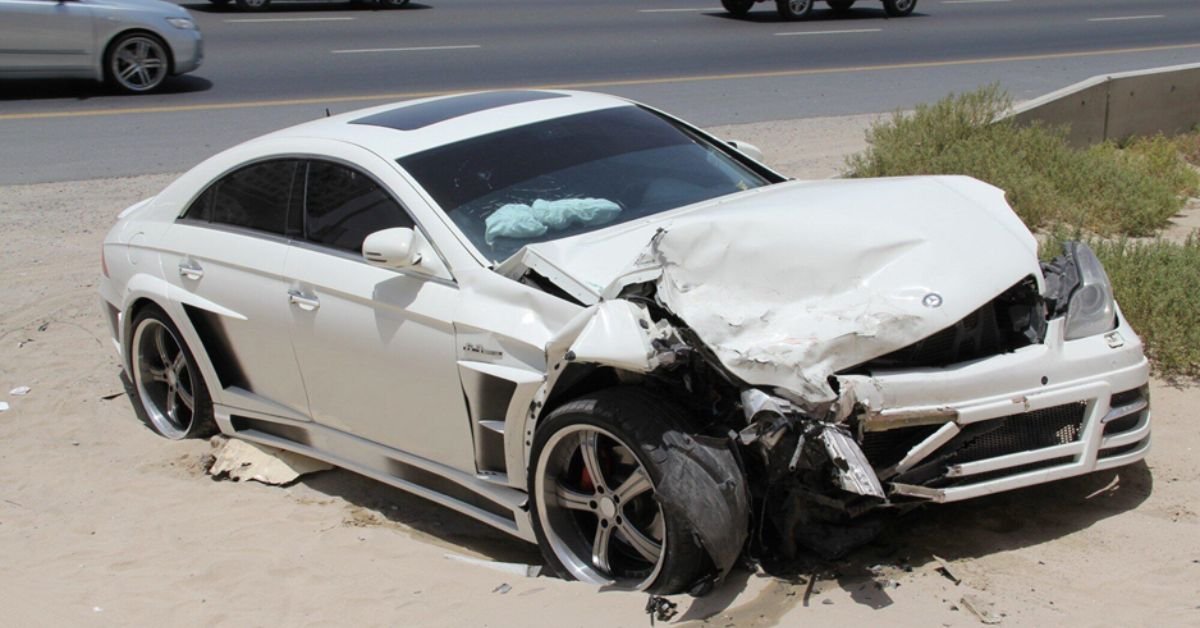Law
The Multiplier Method: A Tool to Measure an Accident Victim’s Emotional Pain

According to a recent study, over 42% of accident victims experience emotional distress after an accident, even if they don’t sustain physical injuries. This emotional toll can manifest as anxiety, depression, or difficulty sleeping.
Personal injury claims in these cases often include compensation for “non-economic damages” – the pain and suffering a victim endures. However, unlike medical bills or lost wages, assigning a dollar value to these unseen struggles can be challenging.
That’s where the multiplier method steps in. As personal injury lawyers at Nicoletti Accident Injury Lawyers put it, “the multiplier method is a valuable tool to ensure clients receive fair compensation for the emotional impact of the accident.”
Understanding Pain and Suffering
In personal injury law, “pain and suffering” refers to the emotional distress a person experiences after an accident. This goes beyond physical discomfort from injuries and encompasses the mental and emotional trauma caused by the event.
Accidents can trigger a wide range of emotions. Anxiety about the future, fear of returning to the scene, or even depression due to lost abilities are all common examples. In more severe cases, some victims may develop Post-Traumatic Stress Disorder (PTSD), experiencing flashbacks or nightmares.
The key thing to remember is that emotional pain is subjective. There’s no universal scale to measure how much anxiety someone feels or how deeply depression affects their life. This subjective nature makes it quite challenging to put several values on pain and suffering.
Economic vs. Non-Economic Damages
Imagine you’ve been in an accident and need to go to the hospital. The cost of treatment, medications, and physical therapy would all be considered economic damages. These are the tangible, out-of-pocket expenses directly related to the accident. Here are some specific examples:
- Medical bills
- Lost wages due to missed work
- Costs of rehabilitation
- Repair or replacement of damaged property
Calculating economic damages is usually straightforward. You can document these expenses using receipts, bills, and other records.
However, not all losses after an accident come with a price tag. Non-economic damages encompass the emotional and psychological impact of the event. These are harder to quantify because they’re subjective and intangible. Here are some examples of non-economic damages:
- Pain and suffering
- Emotional distress (anxiety, depression)
- Loss of enjoyment of life (hobbies, activities)
- Loss of consortium (impact on relationships)
Unlike medical bills, there’s no receipt for emotional pain. This makes assigning a dollar value to non-economic damages much more complex.
The Multiplier Method Explained
The multiplier method offers a structured approach to valuing a victim’s pain and suffering. Here’s a breakdown of the basic steps:
- First, all economic damages are calculated. This includes medical bills, lost wages, and any other quantifiable expenses. These economic damages then become the baseline for non-economic damages.
- Next comes the “multiplier” – a number that reflects the severity of the emotional distress caused by the accident. Factors like the duration of pain, limitations on daily activities, and the impact on mental health all influence the chosen multiplier.
- Finally, the economic damages are multiplied by this chosen number to determine a dollar value for the victim’s pain and suffering.
The specific value of the multiplier can vary depending on the case. Typically, it falls within a range of 1.5 to 5. A higher multiplier signifies a more significant emotional impact, resulting in greater compensation for pain and suffering.

Factors Influencing the Multiplier
Choosing the right multiplier is crucial, as it directly affects the compensation awarded for pain and suffering. Several factors come into play:
- Severity of the Injury: More severe physical injuries often correlate with a more significant emotional impact, justifying a higher multiplier.
- Duration of Pain and Suffering: Accidents can leave lasting emotional scars. The longer a victim experiences anxiety, depression, or pain, the higher the multiplier might be.
- Limitations on Daily Activities: If the accident restricts someone’s ability to work, participate in hobbies, or enjoy life, it strengthens the case for a higher multiplier.
- Impact on Mental Health: Diagnoses of PTSD, depression, or anxiety due to the accident significantly influence the multiplier selection.
- Pre-existing Conditions: While pre-existing mental health issues might not directly stem from the accident, they can be exacerbated by it. This factor can be considered when choosing the multiplier.
Conclusion
While not without its limitations, the multiplier method provides a framework for valuing a victim’s emotional trauma. In personal injury cases, ensuring fair compensation for economic and non-economic damages is crucial for helping accident victims rebuild their lives.
Law
What You Should Know About the Hours of Service Regulations

The Commonwealth of Virginia is a state rich in history. Its charming coastal areas and mountains are a sight that everyone must witness at least once. Sights aside, the state is also a great place to live, with an employment rate above the national average and home to some of the best colleges and universities in the US.
But no US state is perfect, and Virginia is no exception.
The state sees a concerning number of motor vehicle accidents, especially truck accidents. If you happen to be involved in a truck accident in McLean, then you must seek legal assistance. Get in touch with an experienced McLean, VA, truck accident attorney to understand your legal options.
Causes of Truck Accidents
Truck accidents happen due to a variety of reasons. The truck driver is responsible for some, the trucking company is responsible for some, and other elements for a few.
Here are the reasons for truck accidents.
- Distracted driving
- Fatigued driving
- Driving under the influence of alcohol/drugs
- Poor truck maintenance
- Overloaded trucks
- Poorly secured cargo
- Weather-related reasons
It is important to pay special attention to fatigued driving among all these reasons. This is because drivers are forced to work extended hours to meet the tight schedule set by the trucking company. What the drivers don’t know is that they are violating the hours of service regulations, and it is they who will bear the brunt of the accident, not the trucking company.
What are the Hours of Service Regulations?
The Federal Motor Carrier Safety Administration (FMCSA) devised the hours of service regulations to restrict the number of hours an individual driving a commercial motor vehicle can work. The objective was to avoid motor vehicle accidents caused due to fatigue.
The FMCSA has separate guidelines for commercial vehicles ferrying cargo and the ones carrying passengers. We’ll be focusing on the regulations surrounding vehicles that carry cargo.
Here are the key points of the hours of service regulations.
- A driver can operate a vehicle for a maximum of 11 hours, provided they were off duty for 10 hours.
- They cannot drive for more than 14 consecutive hours. This rule applies even if the driver was off duty for the prescribed time period (10 hours).
- Drivers are expected to take a 30-minute break after spending 8 cumulative hours behind the wheel.
- The driver shouldn’t operate their vehicle for more than 60/70 hours in a 7/8-day work cycle. This 7/8-day work cycle can only be repeated if the driver has completed an off-duty period of 34 hours or more.
- The driver can split their 10-hour break period into 2: a 7-hour break in a sleeper berth and a 2-hour break anywhere else. These breaks must add up to the 10-hour off-duty period.
- Drivers are allowed to extend the 11- and 14-hour driving period by 2 hours if harsh weather interrupts their trip.
Conclusion
Trucks are vital to the economy, but their risks cannot be overlooked. Truck accidents have devastating consequences. They usually result in massive loss of property and, in some cases, even life.
It is up to truck drivers to follow all safety guidelines, including the hours of safety regulations. Simply following the rules greatly diminishes the chances of accidents.
Law
Understanding the Legal Implications of Uninsured Motorist Accidents

Car accidents are stressful, especially when the other driver is uninsured. What happens if an uninsured driver hits you? Understanding the legal implications is crucial.
Uninsured motorist accidents can lead to financial and legal challenges. Knowing your rights helps protect you. This blog explains key points to consider.
Stay informed to make better decisions. Let’s dive in.
What Are Uninsured Motorist Accidents
Uninsured motorist accidents occur when a driver without insurance causes a crash. These accidents can leave victims struggling to cover costs. Medical bills and car repairs can pile up quickly.
Knowing your insurance policy’s uninsured motorist coverage is vital. This coverage can help protect you financially.
Understanding the basics ensures you are prepared. Always review your policy to avoid surprises.
How Does Uninsured Motorist Coverage Work?
Uninsured motorist coverage is part of many auto insurance policies. It helps pay for damages if an uninsured driver hits you. This coverage can include medical expenses and vehicle repairs.
Filing a claim under this coverage requires specific steps. Documentation and evidence are essential for a successful claim.
Knowing how this coverage works can save you stress. Check your policy to see if you have this protection.
Handling an Accident With an Uninsured Driver
Accidents involving uninsured drivers can be challenging. First, ensure everyone’s safety and call the police. Gather evidence like:
- photos
- witness statements
Contact your insurance company to report the incident. Your uninsured motorist coverage may help cover costs. For example, what if an uninsured driver hits you?
Knowing your policy details ensures you handle the situation. Stay calm and follow the necessary steps. Being prepared makes a difficult situation easier to manage.
Legal Steps After an Uninsured Motorist Accident
After an uninsured motorist accident, legal steps are necessary. File a police report to document the incident. Notify your insurance company immediately.
Provide all required information and evidence. If needed, consult a lawyer to understand your options. Legal guidance can help you navigate the process.
Taking the right steps protects your rights and interests. Stay proactive to ensure a smoother resolution.
Protecting Yourself from Uninsured Drivers
Protecting yourself from uninsured drivers starts with the right insurance. Ensure your policy includes uninsured motorist coverage. Regularly review and update your coverage limits.
Drive defensively to reduce the risk of accidents. Stay informed about your state’s insurance requirements.
Being prepared minimizes the impact of uninsured motorist accidents. Knowledge and preparation are your best defenses.
Financial Impact of Uninsured Motorist Accidents
Uninsured motorist accidents can have significant financial consequences. Victims often face medical bills and repair costs. Without proper coverage, these expenses can become overwhelming.
Uninsured motorist coverage helps mitigate these financial burdens. It’s essential to understand your policy’s limits and benefits. Planning ahead ensures you are protected in case of an accident.
Stay informed to avoid unexpected costs. Financial preparedness is key to handling such situations. Always review your insurance to ensure adequate protection.
Staying Prepared for Uninsured Motorist Accidents
Uninsured motorist accidents can be overwhelming, but understanding the legal implications helps. Knowing your rights and insurance coverage is crucial.
Stay prepared by reviewing your policy and driving safely. If an uninsured driver hits you, take the right steps.
Protect yourself and your finances with the right knowledge. Being informed makes all the difference in handling these situations.
Law
Crisis Management: Navigating Employee Injury Incidents

Have you ever faced an employee injury at work and felt overwhelmed by what to do next? Workplace injuries can happen at any time, and handling them properly is crucial to protecting your team and your business.
Without a clear plan, minor incidents can quickly turn into major crises. In this guide, you’ll learn step-by-step how to handle employee injury incidents with confidence.
From immediate first aid to legal compliance, we’ll help you create a swift and effective response that ensures safety and peace of mind. Read on!
Prioritize Immediate Medical Attention
It’s important to act quickly when an employee gets hurt. The first step is to figure out how bad the injury is. If it’s serious, you should call 911 right away.
For minor injuries, give first aid and keep a close eye on things. Always have a first-aid kit with plenty of supplies and trained people on hand.
People should be told to report injuries right away, even if they don’t seem serious. Putting off treatment can make the condition worse and cause other problems.
Carefully write down what happened so there is no confusion later. Before you do anything else, make sure the hurt worker gets the right care. How quickly you act can make all the difference in the recovery.
Secure the Accident Scene
Once medical needs have been met, it is very important to keep the scene safe. This stops more harm from happening and keeps evidence for further investigation. Block off the area if you need to to keep other people safe.
Find any dangers that could have led to the accident and fix them right away. Take statements from witnesses while the details are still fresh in their minds.
To keep accurate records, take pictures or videos of the scene. Look over the safety rules to see if they need to be changed. Being able to talk to your team clearly can help stop problems like this from happening again. A safe place to work is good for everyone.
Report the Incident Promptly
For compliance and openness, reports must be made on time. Depending on how bad it is, you may need to tell the regulatory authorities.
For example, OSHA has strict rules about how injuries at work must be reported. Let your management and HR department know right away.
Make sure the worker who got hurt knows what to do next and what their rights are. Keep copies of all the messages you send about the incident.
Labor laws say that you have to report things right away. It also shows your employees that you care about safety, which builds trust. A well-documented report makes things clear and holds people accountable.
Investigate the Cause of the Injury
Figuring out why an injury happened can help stop it from happening again. Find the root cause by doing a thorough investigation.
Talk to the worker who was hurt and any witnesses to get first-hand accounts. Look at surveillance footage if you have access to it. Look at the tools, equipment, and working conditions that led to the accident.
Check to see if the right safety steps were taken or not taken. Safety officers or outside experts should be brought in if needed.
A thorough investigation can teach us a lot about how to stop similar accidents from happening again. The objective is to make the area safer for everyone.
Review Workplace Safety Policies
It is important to go over safety rules again after an incident. Check to see if the current rules still work and are correct. Find any holes that could have caused the injury. Employees should be reminded of the safest things to do.
Make sure that all of your workers know how to properly deal with risks. If necessary, update the rules to make the workplace safer.
Tell your employees they can talk about safety concerns without worrying about getting in trouble. A strong culture of safety cuts down on accidents and boosts productivity. Always try to avoid something instead of reacting to it.
Support the Injured Employee
An injured employee needs more than just medical treatment; they need emotional and professional support. Check-in regularly to see how they’re doing.
Help them navigate the recovery process, including necessary paperwork. Assist with their return-to-work plan, whether through modified duties or adjusted schedules.
Show empathy and patience as they heal. If needed, recommend a lawyer for workers’ compensation to ensure they receive fair benefits.
Supporting injured employees builds trust and loyalty within your workforce. A caring employer creates a positive work environment.
Maintain Open Communication
Clear communication during a crisis prevents confusion and frustration. Keep the injured employee informed about company procedures and their rights.
Update the team about any changes resulting from the incident. Address concerns honestly to avoid misinformation. Hold safety meetings to discuss lessons learned from the accident. Encourage employees to share suggestions for a safer workplace.
Effective communication fosters a supportive and proactive work culture. Transparency strengthens employee confidence in management. Keeping everyone in the loop makes crisis management smoother.
Implement Preventative Measures
Learning from past incidents helps prevent future accidents. Use investigation findings to improve workplace safety. Provide ongoing safety training for all employees. Conduct regular inspections to identify and fix hazards.
Encourage workers to report unsafe conditions immediately. Invest in protective gear and equipment where necessary. Update emergency response plans based on real-life experiences. Recognize and reward employees who prioritize safety. Prevention saves lives, time, and money in the long run.
Review and Improve Crisis Response Plans
A crisis response plan should evolve with experience. Evaluate how well your team handled the recent incident. Identify areas where response time or procedures could improve. Update protocols to address any shortcomings.
Conduct emergency drills to keep employees prepared. Seek feedback from staff about their experience with the process. Stay informed about new regulations and best practices in crisis management.
A strong plan ensures readiness for any future incidents. Continuous improvement leads to a safer and more efficient workplace.
Crisis Management Saves Lives and Business
Having a good crisis management plan for how to handle employee injuries is good for everyone. It keeps workers safe, makes sure the law is followed, and stops accidents from happening again.
You can make the workplace safer and more supportive by acting quickly, securing the scene, and keeping lines of communication open. Your workplace safety culture will be stronger if you learn from each accident.
-

 Entertainment11 months ago
Entertainment11 months agoSandra Orlow: Exploring the Life and Legacy of a Cultural Icon
-

 General7 months ago
General7 months agoBaby Alien Fan Bus: Watch Parts 2 & 3 on Twitter, Reddit!
-

 General7 months ago
General7 months agoDiana Nyad & Bart Springtime: A Swim to Success
-

 Business12 months ago
Business12 months agoTex9.Net Crypto: Fast, Secure International Money Transfers with Competitive Rates
-

 Business12 months ago
Business12 months agoWhat is O Farming: How to Make Money Online and Its Start-Up Benefits
-

 Business11 months ago
Business11 months agoSnapchat Planets: Exploring Your Streak Universe
-

 General10 months ago
General10 months agoDeeper Dive into myfavouriteplaces. org:// blog
-

 Business12 months ago
Business12 months agoFintechZoom Apple Stock: Real-Time Insights and Expert Analysis
